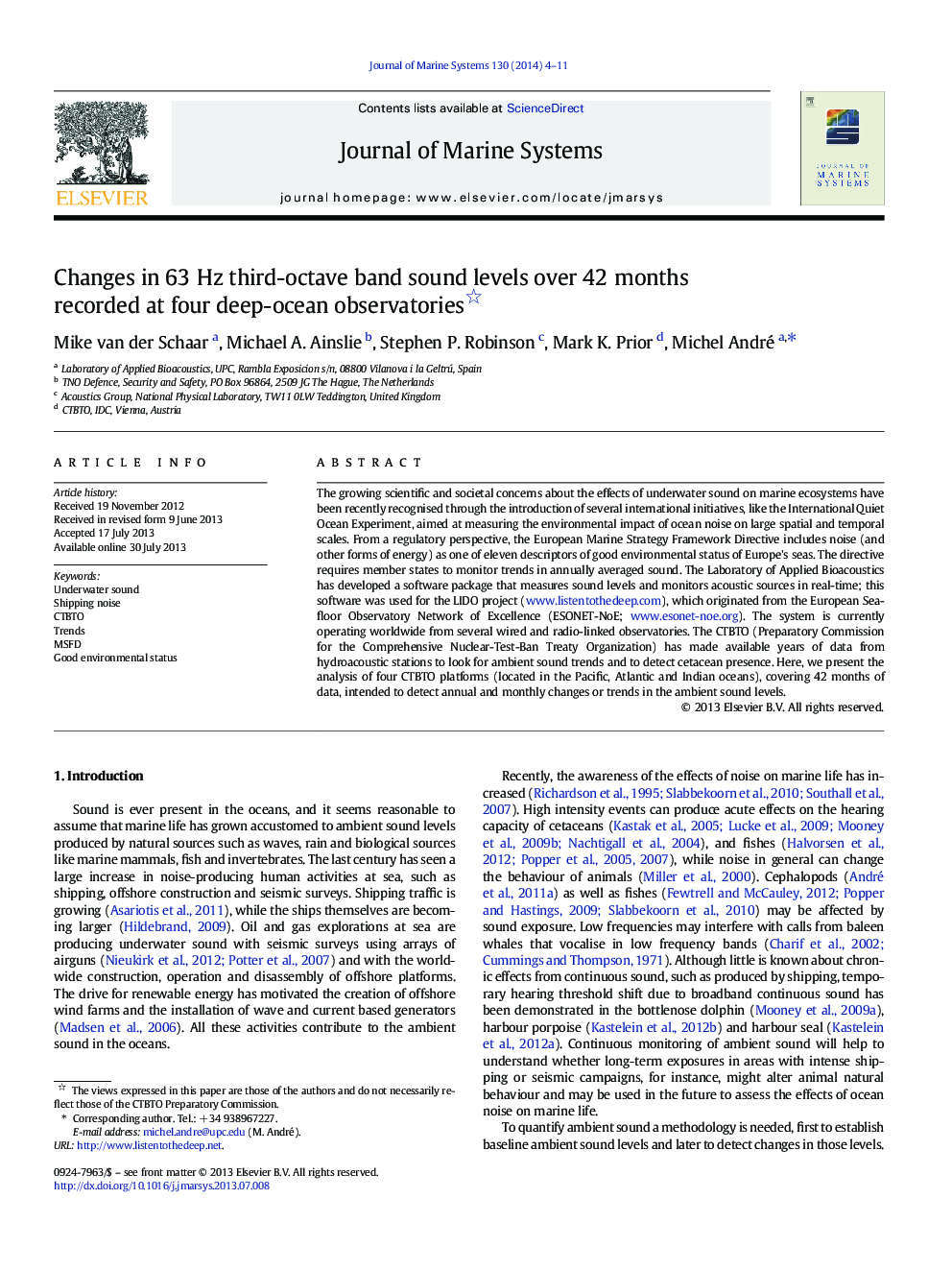| Article ID | Journal | Published Year | Pages | File Type |
|---|---|---|---|---|
| 6387047 | Journal of Marine Systems | 2014 | 8 Pages |
â¢Averaging methods have been compared with data from 4 CTBTO stations.â¢Measurement levels are compared and conformed to existing literature.â¢No trends have been found in the 3 years of measurements.â¢The trend criterion for the EU MSFD noise evaluation is found to be inadequate.
The growing scientific and societal concerns about the effects of underwater sound on marine ecosystems have been recently recognised through the introduction of several international initiatives, like the International Quiet Ocean Experiment, aimed at measuring the environmental impact of ocean noise on large spatial and temporal scales. From a regulatory perspective, the European Marine Strategy Framework Directive includes noise (and other forms of energy) as one of eleven descriptors of good environmental status of Europe's seas. The directive requires member states to monitor trends in annually averaged sound. The Laboratory of Applied Bioacoustics has developed a software package that measures sound levels and monitors acoustic sources in real-time; this software was used for the LIDO project (www.listentothedeep.com), which originated from the European Seafloor Observatory Network of Excellence (ESONET-NoE; www.esonet-noe.org). The system is currently operating worldwide from several wired and radio-linked observatories. The CTBTO (Preparatory Commission for the Comprehensive Nuclear-Test-Ban Treaty Organization) has made available years of data from hydroacoustic stations to look for ambient sound trends and to detect cetacean presence. Here, we present the analysis of four CTBTO platforms (located in the Pacific, Atlantic and Indian oceans), covering 42Â months of data, intended to detect annual and monthly changes or trends in the ambient sound levels.
